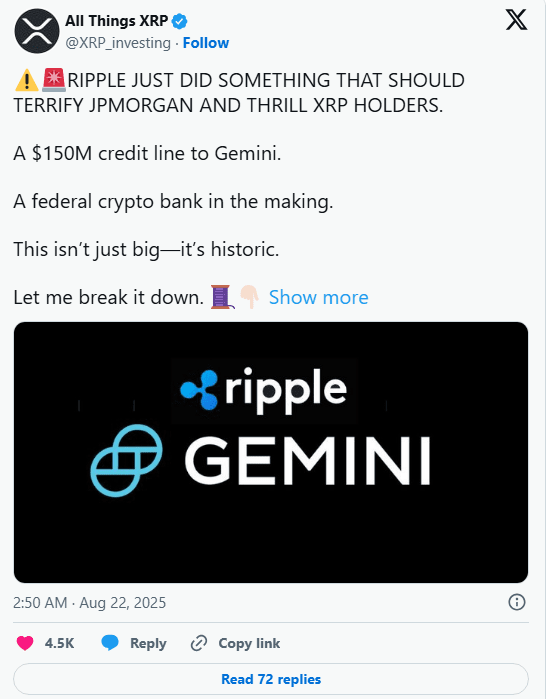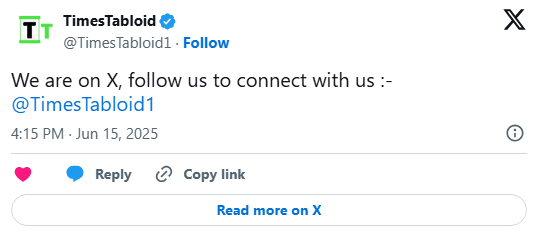Crypto enthusiast All Things XRP recently shared a detailed analysis of Ripple's $150 million credit line to Gemini. He stated that this move is significant for Ripple's broader financial ambitions and XRP's potential role in the institutional market.
According to his assessment, the credit arrangement is not only a lifeline for Gemini but also a well-considered step that aligns with Ripple's broader strategy to integrate its stablecoin RLUSD and position itself as a participant in the U.S. banking infrastructure.

Credit arrangements and Gemini's position
The analysis report outlines that Ripple provided a $75 million secured credit line to Gemini, which can be expanded to $150 million. No funds have been withdrawn yet, but this credit line has been included in Gemini's IPO application.
According to All Things XRP, the significance of this move lies in Gemini's financial situation. He pointed out that in the first half of 2025, Gemini reported a loss of $282 million and had liabilities exceeding $2 billion. Against this backdrop, this credit line is seen as crucial support for Gemini's preparation for an IPO on Nasdaq.
Connection to the adoption of RLUSD
All Things XRP emphasizes that Ripple's decision to extend this service is not just to assist Gemini. If Gemini secures a loan of over $75 million, Ripple could convert this loan into its dollar-backed stablecoin RLUSD.
He emphasized that this could open a pathway for institutional adoption of RLUSD, especially in the case where Gemini uses the stablecoin to settle IPO funds. He linked this to Ripple's previous role in the Bullish IPO, where Bullish's $1.15 billion funding was settled through RLUSD. The analysis suggests that Ripple may adopt a similar pattern again, but given Gemini's upcoming listing, this time the impact will be more profound.
Ripple's banking license application
The analysis also mentioned Ripple's application for a national trust bank charter in July. If approved, Ripple would be authorized to hold Federal Reserve reserves, offer FDIC-insured crypto deposits, and potentially use custodial XRP as regulatory capital.
All Things XRP believes that with its custody of 40 billion XRP, this move could place Ripple among the top 20 banks in the U.S. He described the significance of this move, especially since it will be conducted entirely on-chain and under regulation.

Industry resistance and competitive landscape
All Things XRP pointed out in comments that major banking organizations opposed Ripple's charter application, including the Independent Community Bankers of America (ICBA), National Community Reinvestment Coalition (NCRC), JPMorgan Chase, and Bank of America.
He believes this resistance stems from the view that Ripple is not only seeking to join the financial system but is also attempting to restructure its underlying infrastructure.
Advantages of XRP
The analysis concludes that Ripple's actions bring indirect but meaningful benefits to XRP. Every RLUSD transaction will settle on the XRP ledger, creating activity and fees in the form of XRP. The increase in utility, combined with a reduced demand for Ripple to sell custodial assets, could create favorable momentum for the asset.
All Things XRP summarizes Ripple's overall development trajectory as building a crypto-native banking framework, including credit facilities, stablecoin infrastructure, institutional integration, and regulatory structures.
